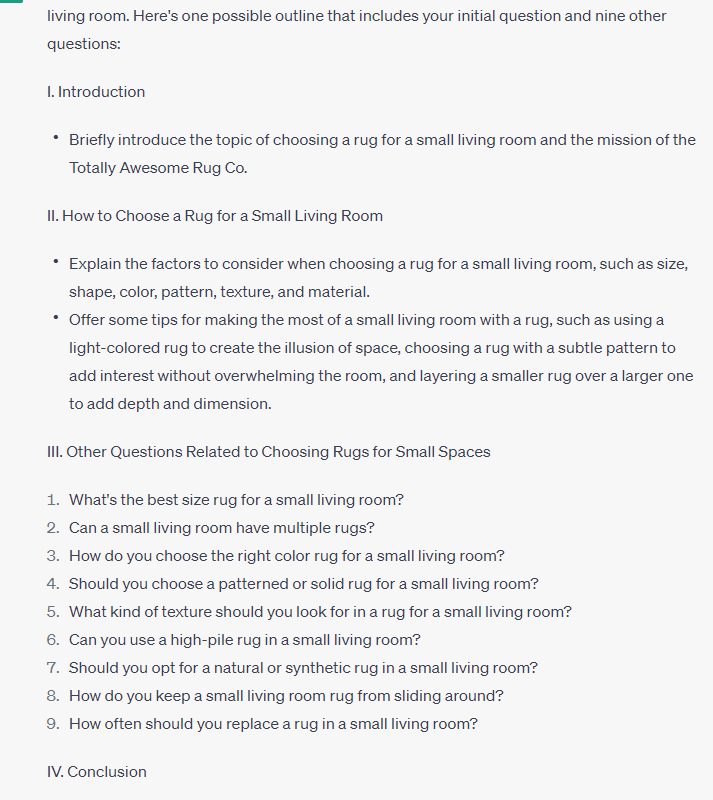How to Write a Blog Post FAST [Tips for Beginning Copywriters]
Maybe clients are (finally) knocking on your virtual door, but now you have to write two blog posts for one client, three for another, and possibly two more if the latest prospect accepts your proposal. And suddenly, you find yourself googling “how to write a blog post fast.” Trust me, I get it. You want and need the work, but it can be overwhelming when everything seems to hit at once. Luckily, you can and will get faster with your writing.
Below, I’m going to share tips on how to shorten the blog-writing process.
- Use a winning blog post formula.
- Tap ChatGPT to produce an outline.
- Gather your research and resources before you sit down to write.
- Allow yourself to write a messy first draft
- Use dictation software.
- Don’t forget to build in time for revisions and proofreading.
If you learn better by watching or listening to a video, check out the one I embed at the end of the post.
Let’s get to it.
How to write a blog post FAST
These strategies work for me, but you’ll need to figure out what works for YOU. And then stick with it.
1. Use a winning blog post formula.
Make sure you check out my blog post on how to structure a blog post for SEO. Because once SEO structure becomes second nature, the writing and editing will go faster.
Another way to make the drafting go faster is by choosing a winning blog post formula like one of the following:
- Q&A format. I LOVE this format. The questions serve as keyword-rich sub-headlines. Then, I answer the questions. Site visitors like this format because it’s easy for them to spot the answer to their query. And Google loves this format as well. Do an excellent job, and one of your answers could end up in Google’s featured snippet, which takes up primo real estate on the search engine results page (SERP).
- Problem/solution/results. This is essentially a case study or customer story. The keyword is “story.” Tell a great, compelling story.
- Checklists. People love lists. To sweeten the post, you could turn the list into a PDF that people can download. Check out this post where I offer a free invoice template for copywriters and use it as a model.
- Numbered lists. That’s the format I’m using for this post. (I use it a lot because if I identify my six or eight or whatever the number of “things” are up front, I simply write quickly under each heading.)
- How-to posts and “ultimate guide” posts are also winning formulas. But these tend to take longer to write. However, you can cut down the time it takes to do a how-to if a how-to video already exists. You could get the video transcribed from a place like Rev.com, use it as the main content for your blog post, and embed the video. Boom! You’re done.
2. Tap ChatGPT to produce an outline.
Yes, I’m a freelance copywriter recommending the tool that is supposedly coming for my job. 🙂
I’m working on a series of ChatGPT blog posts and videos, but the short of it goes like this: ChatGPT is a great tool. But like any other tool, it has limitations. For one, you’ll need to heavily revise anything it spits out so you can match your client’s brand voice. This is why it doesn’t make sense to ask ChatGPT to write blog posts or long-form content because you’ll need to rewrite everything anyway. I don’t know about you, but I find rewriting someone else’s work takes a lot longer than simply writing something on my own from scratch. (Potential adverse SEO implications also exist. Google does not take kindly to people pumping out generic content to manipulate rankings.)
But ChatGPT can be good for short stuff and brainstorming. THAT’S where this tip comes in. You can prompt ChatGPT to come up with an outline for a blog post.
You should be SUPER specific in what you’re asking ChatGPT to do.
For example, let’s say my client owns a rug company, and we want to do a blog post on “how to choose a rug for a small living room.” It’s a long-tail keyword phrase with only 20 searches a month.
You figure this could be a good Q&A format blog post where you answer a bunch of questions about how to choose a rug for a small living room, like tips for measuring, how to make the living room look bigger, and other considerations.
Your prompt for ChatGPT might look like this: Hi, ChatGPT. I’m working on a blog post for the Totally Awesome Rug Co., which caters to helping homeowners, condo owners, and apartment dwellers find the best, affordable rug for their space, no matter the size or budget. We want to do a blog post titled “How to Choose a Rug for a Small Living Room.” We want to write it in a question-and-answer format. “How to Choose a Rug for a Small Living Room” should be the first question, but I want to craft a blog post with other helpful questions related to choosing rugs for small spaces. Can you come up with a blog outline that includes my initial question but also 9 other questions? Our tone is fun and carefree.
Here’s how ChatGPT responded to my prompt, in a matter of seconds.

Not bad, right?
You’ll want to edit it, of course. You might not like one of the questions, or maybe you’ll think of another. But it’s much easier to get going when you have an outline staring at you rather than a blank page.
ChatGPT is like a sous chef who cuts up all your veggies. You’re still the chef. You need to assemble the magical dish.
3. Gather your research and resources before you sit down to write.
By the time you sit down to write, you should have all the “pre-work” done. This includes creating an outline (or having ChatGPT do the honors) and compiling research and resources. I know this might seem like a chicken-egg conundrum—how do you know what research you need if you haven’t written anything yet? But your outline should clue you in on what research, like stats or stories, will help bring your blog post to life.
Going back to our rug outline . . . you might add a question that asks “How do I measure my living room rug size.” Before you sit down to write, you might email or talk to someone from the company to see if they have existing collateral, like a chart or calculator. If not, you might simply ask your subject matter expert how they advise customers to measure. Get their answer in writing or record their answer on Zoom and have Rev.com transcribe it. You’d then have this info ready to insert into your post before you sit down to write.
4. Use dictation software.
Speaking of recording, another way to speed up the writing process is by using dictation software. With your blog post outline in hand, you can record yourself talking through the content for each section. (Use the memo function on your phone to record.) Then, use Rev.com or Temi to provide an automated transcription. (Currently, Rev.com costs .25/minute. So a 10-minute spiel would cost $2.50, which isn’t bad.)
From there, you can revise, optimize, and polish.
5. Allow yourself to write a messy first draft.
When you do sit down to draft your blog post, do a “down and dirty” draft. Don’t self-edit and don’t worry about SEO. Just WRITE.
Tell yourself the draft doesn’t need to be perfect. You just need to get something down. You can fix whatever works later. As the saying goes, you can’t revise or edit a blank page.
6. Build in time for revising, optimizing, and proofreading.
Once you get the draft down, you need to optimize it for SEO, revise it for clarity and tone, and proofread the heck out of it. This takes time. Don’t skimp. If you want to get faster at blogging, you’ll need to get faster at all phases, not just the drafting part. And this most certainly includes revising and proofreading:
OK! I hope some of these suggestions on how to write a blog post fast are helpful.
Remember, find what works for YOU—and keep doing it. You will get faster over time.
Got a question for the Copy Bitch?
That’s me—I’m the Copy Bitch. I have over 20 years of experience as a freelance copywriter and love sharing what I’ve learned. Reach out with a question or leave a question in the comments on one of my YouTube videos.
